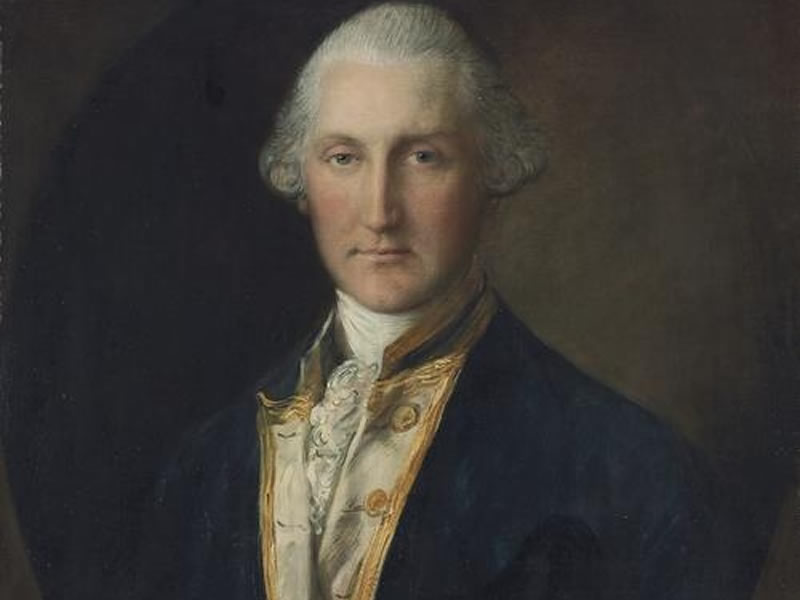
Image courtesy of the National Park Service
(1730-1778) A younger son of John Campbell, fourth duke of Argyll, William entered the navy in 1745 and served in India. As captain of the HMS Nightingale, in 1763 he put into Charleston, where he met Sarah Izard, a rich heiress, then on the verge of marriage to another. But Campbell prevailed, and they were married on April 17, 1763. Returning to Britain, he successfully ran for Parliament from Argyllshire. In 1766 the Rockingham administration appointed him governor of Nova Scotia, and in June 1773 his family’s influence secured his promotion to the governorship of South Carolina.
Campbell arrived in Charleston in June 1775. By then the Revolutionary Provincial Congress and its Council of Safety had usurped royal authority, and Campbell faced impossible obstacles as governor. Rumors that he was bringing arms for British-instigated Indian attacks and slave insurrections complicated his task and eventually led Revolutionary authorities to execute Thomas Jeremiah, a free black harbor pilot who was accused of being a ringleader of the impending uprising. Campbell believed him to be innocent but was powerless to intervene. The governor, however, was able to correspond with Loyalists in the backcountry. His optimistic reports of their strength contributed later to British decisions to attack South Carolina in 1776 and 1780. After Revolutionary leaders discovered Campbell’s clandestine activities, he fled from Charleston on September 15, 1775. The departure of South Carolina’s last royal governor enabled Revolutionary leaders to claim that George III, like King James II during the Glorious Revolution, had “abdicated the government,” and accordingly, “WE OWE NO OBEDIENCE TO HIM.”
During the British naval attack on Sullivan’s Island in June 1776, Campbell commanded cannons aboard the HMS Bristol and received wounds from which he never completely recovered. Two years later he died at Southampton, England, during the first week of September 1778.


